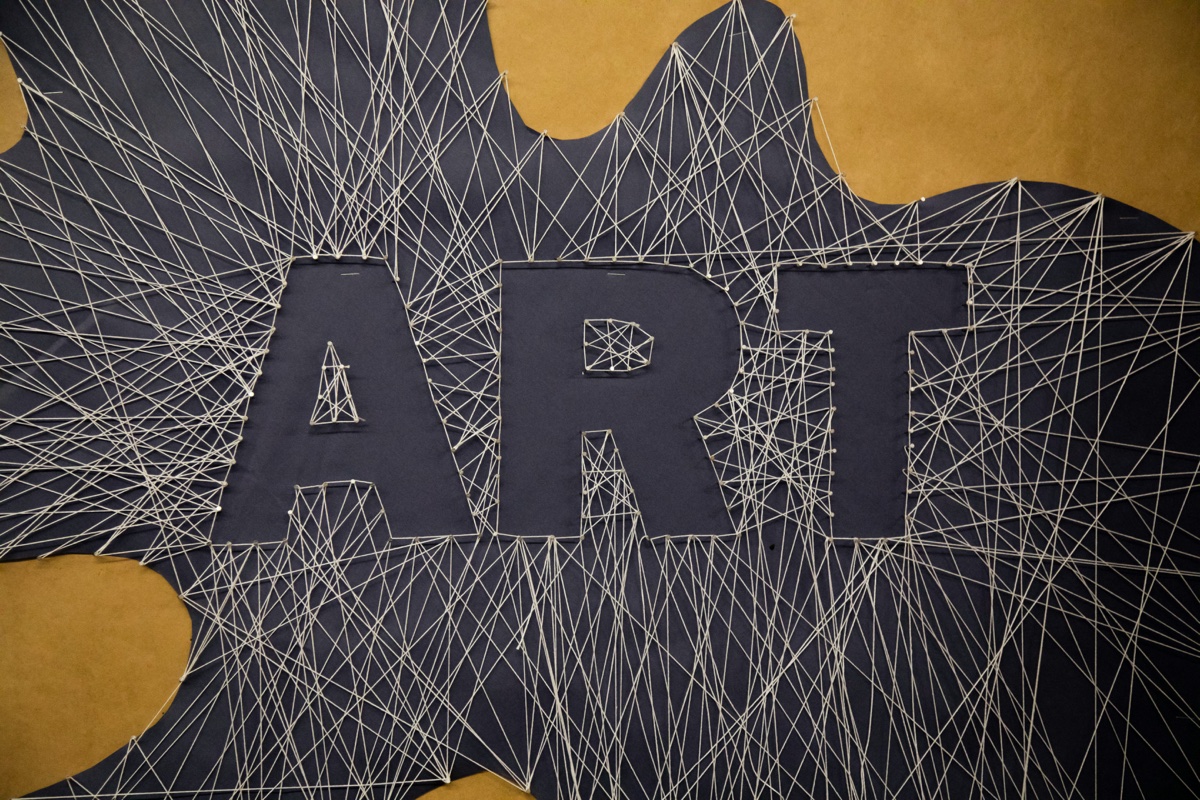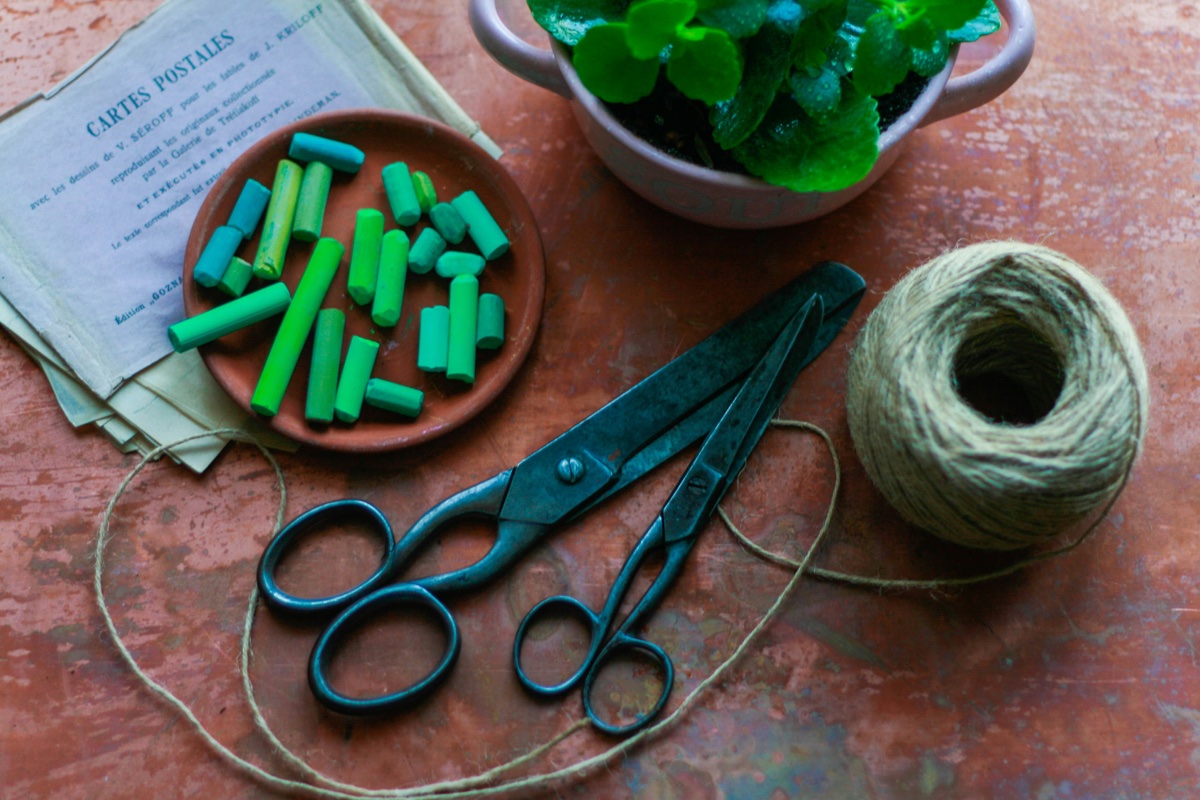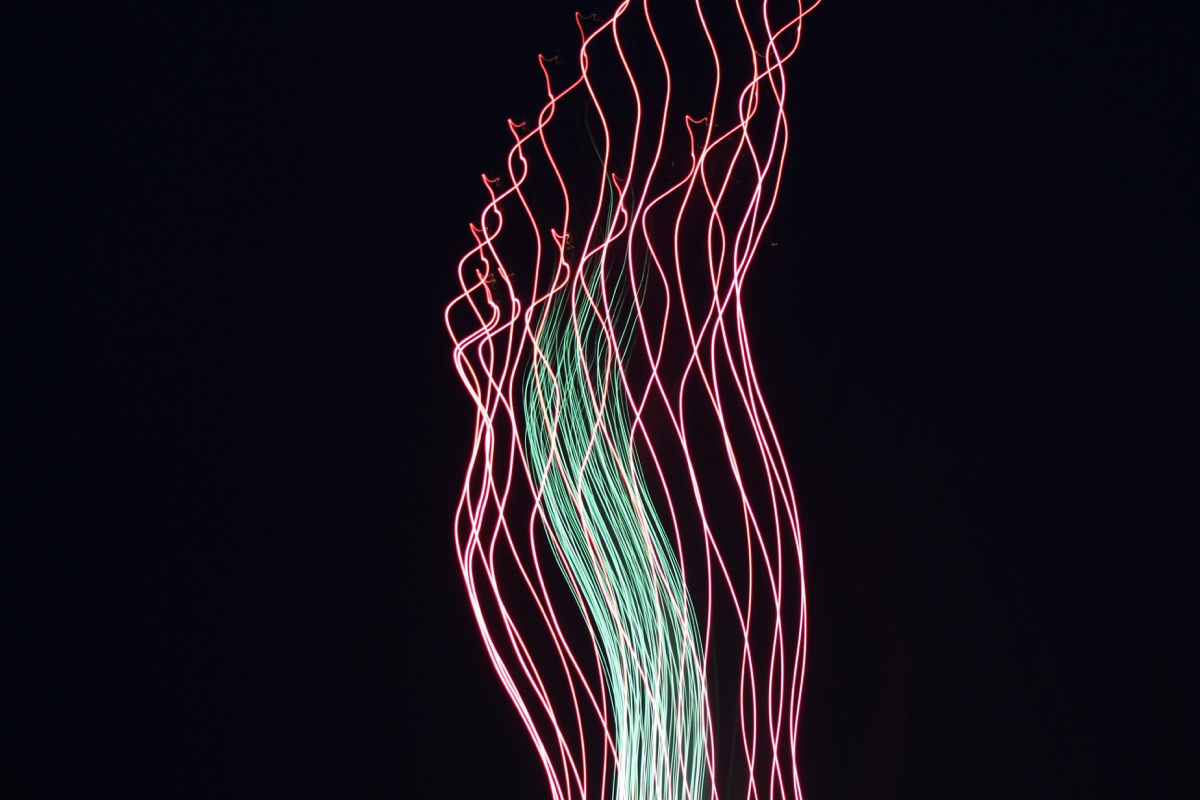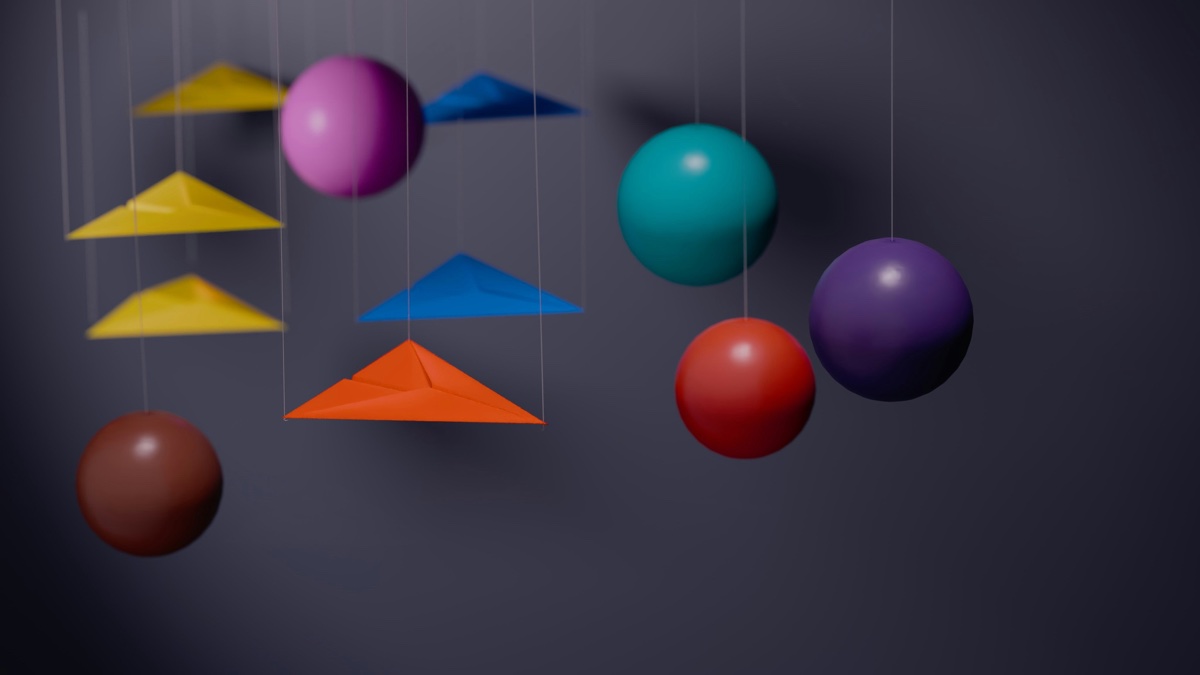What is String Art?
What is string art? String art is a unique artistic technique that creates visual images by wrapping colored thread or string around pins arranged in a specific pattern, typically on a wooden board. This fascinating craft combines mathematical precision with artistic creativity, producing stunning visual effects through the strategic placement of overlapping lines.
At its core, string art—also known as pin and string art or thread art—works on a deceptively simple principle: straight lines can create the illusion of curves. When you connect pins in the right sequence, the overlapping threads form areas of varying density. Dense areas where many lines cross appear darker, creating shadows and depth, while sparse areas remain lighter. This interplay of light and dark produces recognizable images ranging from simple geometric patterns to complex photorealistic portraits.
The beauty of string art lies in its mathematical foundation. Every piece is essentially a physical representation of geometric principles, making it both an art form and an educational tool. Whether created manually or generated algorithmically using modern tools like our String Art Generator, each piece demonstrates how mathematical concepts can produce visually striking results.
Quick Definition
String Art: An artistic technique using colored thread wrapped around pins to create images through overlapping straight lines, combining geometry, mathematics, and visual art.
History of String Art
The history of string art is deeply rooted in mathematics education and Victorian-era innovation. Understanding where string art comes from helps us appreciate its evolution from educational tool to modern art form.
Origins: Mary Everest Boole and Curve Stitching
String art as we know it today originated in the 19th century with Mary Everest Boole (1832-1916), a self-taught mathematician and educator. Boole developed what she called "curve stitching" as a method to help children understand mathematical concepts visually. Her technique involved using straight lines to create the appearance of curves—a concept that seemed almost magical to students encountering it for the first time.
Boole's curve stitching method was revolutionary for mathematics education. By threading colored strings through holes in cardboard according to specific numerical sequences, students could literally see abstract mathematical principles take physical form. Parabolas, hyperbolas, and other complex curves emerged from nothing but straight lines, making geometry accessible and engaging.
The 1960s-70s Craft Boom
String art experienced a major resurgence in the 1960s and 1970s when it became a popular craft hobby. During this era, string art evolved from an educational tool into a decorative art form. Artists began creating increasingly complex designs—from geometric patterns and mandalas to stylized animals and abstract compositions.
The craft movement of this period democratized string art, making it accessible to hobbyists without mathematical backgrounds. Pre-designed patterns became widely available in craft stores, and string art pieces became common home decorations, particularly featuring psychedelic patterns, owls, sailing ships, and inspirational words.
Contemporary Revival
The 21st century has seen string art undergo another transformation. Modern artists have elevated pin and string art to fine art status, creating massive installations in galleries and public spaces. The advent of computer algorithms and digital tools has revolutionized design possibilities, enabling artists to create photorealistic string art portraits and complex gradient images that would be nearly impossible to plan manually.
Today's string art represents the perfect fusion of traditional craft techniques and cutting-edge technology, with artists using everything from traditional embroidery thread to LED-lit fiber optics.
Mathematical Foundations
To truly understand what is string art, you need to appreciate its mathematical underpinnings. String art is fundamentally an application of geometry and algebra visualized through physical materials.
Straight Lines Creating Curves
The most remarkable mathematical principle in string art is that straight lines, when arranged properly, create the visual appearance of curves. This concept is called the "envelope of lines." When you connect points following a mathematical sequence, the envelope formed by these straight lines approximates a smooth curve.
For example, connecting pins numbered 1 through 20 on one side of a frame to pins numbered 20 through 1 on another side creates a parabolic curve, even though every individual thread is perfectly straight. This principle extends to creating circles, ellipses, hyperbolas, and more complex curves.
Bezier Curves and Modern String Art
Modern digital string art often employs Bezier curves—mathematical formulas used in computer graphics to create smooth curves from control points. When algorithms generate string art patterns, they frequently use Bezier mathematics to determine optimal line placement.
The algorithm analyzes the target image, identifies areas of different brightness, then calculates which pin-to-pin connections will create the necessary density of lines to reproduce those brightness levels. Each line placement is mathematically optimized to maximize the resemblance to the original image.
Geometry in Pin Placement
The arrangement of pins is itself a geometric exercise. Most string art uses pins arranged in a circle (creating polar coordinates) or a grid (Cartesian coordinates). The number of pins and their spacing determines the resolution of the final image—more pins allow finer detail but require exponentially more lines to create the same density.
Mathematical Insight
A circular string art piece with 288 pins has 41,328 possible unique connections (288 × 287 ÷ 2). Selecting the optimal 3,000-5,000 lines from these possibilities to reproduce an image requires sophisticated algorithms—or hours of manual trial and error.
Traditional vs Digital String Art
String art can be approached through traditional manual methods or modern digital techniques. Each approach has distinct characteristics, advantages, and artistic possibilities.
Traditional String Art
Traditional string art is created entirely by hand, with artists manually selecting each pin-to-pin connection based on visual judgment and experience. This approach emphasizes:
- Artistic Intuition: The artist decides which lines to add by visually comparing the work-in-progress to the target image
- Organic Development: The piece evolves naturally, with adjustments made as patterns emerge
- Unique Results: Each piece is truly one-of-a-kind, as recreating the exact same line sequence manually is nearly impossible
- Meditative Process: The slow, deliberate nature of manual creation makes it a contemplative craft
- Limited Complexity: Highly complex images with subtle gradations are difficult to achieve without algorithmic assistance
Digital String Art
Digital string art uses computer algorithms to calculate optimal line sequences. This modern approach offers:
- Photorealistic Results: Algorithms can reproduce photographs with remarkable accuracy by mathematically optimizing line placement
- Precision Planning: Every line is calculated to maximize the overall image quality
- Reproducibility: The same pattern can be created multiple times with identical results
- Complex Gradients: Subtle shading and smooth tonal transitions become achievable
- Time Efficiency: Pattern generation takes minutes instead of hours of planning
Hybrid Approach
Many contemporary artists combine both methods—using algorithmic tools like our String Art Generator to create the initial pattern and line sequence, then making artistic adjustments during the physical creation process. This hybrid approach captures the precision of digital planning with the personal touch of handcrafted execution.
Modern Applications
String art has evolved far beyond its origins as a mathematical teaching tool. Today, this versatile medium finds applications across multiple domains.
Fine Art and Gallery Installations
Contemporary artists have elevated string art to fine art status, creating large-scale installations for galleries, museums, and public spaces. These pieces often push the boundaries of the medium with:
- Multi-layered compositions using different colored threads
- Massive installations spanning entire walls or rooms
- Three-dimensional string art sculptures
- Interactive pieces that change appearance based on viewing angle
- Integration with lighting effects to create dynamic shadows
Educational Applications
String art remains valuable in education, helping students visualize:
- Geometry: Understanding how straight lines create curves, exploring coordinate systems
- Algebra: Seeing mathematical functions as physical objects
- Pattern Recognition: Identifying sequences and mathematical relationships
- Spatial Reasoning: Developing three-dimensional thinking skills
- STEM Integration: Combining art with science, technology, engineering, and mathematics
Home Decor and Personalization
String art has become increasingly popular for home decoration:
- Custom portrait string art of family members or pets
- Personalized wedding or anniversary gifts
- Inspirational word art for motivational displays
- Geometric accent pieces that complement modern interiors
- Nursery decorations featuring names or whimsical designs
Commercial and Brand Applications
Businesses leverage string art for:
- Unique logo displays in office spaces and retail environments
- Eye-catching advertising installations at trade shows and events
- Memorable product launches and brand activations
- Custom corporate gifts demonstrating craftsmanship and attention to detail
- Social media content that stands out due to its tactile, handcrafted quality
Cultural Impact
String art has appeared in popular culture, from music videos and album covers to television shows and movie set designs. Its distinctive aesthetic—simultaneously retro and contemporary—makes it visually compelling across generations.
Types of String Art
String art encompasses several distinct styles and approaches, each with unique characteristics and artistic possibilities.
Geometric String Art
The most traditional form, geometric string art creates patterns using mathematical shapes and sequences. Common designs include:
- Circle Patterns: Radiating lines from a circular arrangement of pins
- Spiral Designs: Fibonacci spirals and golden ratio compositions
- Mandala Patterns: Symmetrical, meditative designs inspired by sacred geometry
- Polygon Variations: Triangles, hexagons, and complex polyhedra
- Mathematical Curves: Parabolas, hyperbolas, and cardioids visualized through line art
Geometric string art is excellent for beginners as the patterns are structured and predictable. It's also widely used in mathematics education to teach concepts like symmetry, angles, and curve generation.
Portrait String Art
Portrait string art reproduces human faces or figures using thread and pins. This style requires:
- High pin density (typically 300-500 pins) for adequate detail
- Thousands of carefully sequenced lines (3,000-6,000+ connections)
- Strong contrast in the original image to ensure features remain clear
- Algorithmic planning tools for optimal results—manual planning is extremely difficult
Portrait string art has become particularly popular for personalized gifts, memorial pieces, and fine art exhibitions. The technique excels at capturing facial expressions and the play of light and shadow across human features.
Landscape and Nature String Art
Landscape string art depicts natural scenes—mountains, forests, oceans, animals, and flora. These pieces work best with:
- Strong silhouettes (mountain ranges, tree lines, animal outlines)
- Clear separation between foreground and background elements
- High-contrast scenes like sunsets or moonlit landscapes
- Simplified compositions that emphasize shapes over fine details
Abstract and Artistic String Art
Abstract string art focuses on aesthetic appeal rather than representational accuracy. Artists explore:
- Color theory using multiple thread colors in single compositions
- Texture variation through different thread materials and thicknesses
- Experimental pin arrangements beyond traditional circular layouts
- Layered compositions with multiple depths
- Integration with other media like paint, wood burning, or embedded objects
Text and Typography String Art
Words and letters created in string art form have become popular for:
- Motivational quotes and inspirational messages
- Names for nurseries and children's rooms
- Brand names and logos for businesses
- Event signage for weddings and celebrations
Typography string art works best with bold, simple fonts where letterforms remain clear despite the line-based construction.
Getting Started with String Art
Now that you understand what is string art and its various forms, you might be wondering how to create your own pieces. Getting started is easier than you might think.
Essential Materials
To begin your string art journey, you'll need:
- Base Surface: Wooden board (plywood, MDF, or solid wood) or alternative backing like cork or foam
- Pins or Nails: Small wire nails or panel pins, typically 1 inch long
- Thread: Embroidery floss, crochet thread, or specialized string art thread
- Tools: Hammer, pencil, ruler or compass, scissors
- Pattern: Either hand-drawn or generated digitally
For detailed guidance on selecting materials, see our comprehensive guide on choosing the best string for string art.
The Basic Process
Creating string art follows these fundamental steps:
- Prepare Your Board: Sand, paint, or stain your base surface
- Mark Pin Positions: Transfer your pattern to the board, marking where each pin will go
- Insert Pins: Hammer pins to consistent depth (typically 1/2 to 3/4 inch)
- String Your Design: Follow your line sequence, wrapping thread from pin to pin
- Finish and Display: Secure the final thread and hang your completed artwork
For a detailed step-by-step tutorial covering every aspect of the creation process, check out our complete guide on how to do string art.
Choosing Your First Project
Beginners should start with:
- Simple geometric patterns (circles, hearts, stars)
- High-contrast silhouette images
- 200-300 pins maximum
- 1,000-2,000 lines for manageability
- A single thread color to avoid complexity
As your skills develop, you can progress to portraits, multi-color compositions, and custom designs. Many artists find that using digital tools like our String Art Generator removes the guesswork from pattern planning, allowing them to focus on the enjoyable physical creation process.
Success Tip
The most common mistake beginners make is choosing an overly complex first project. Start simple, master the basic techniques, then progressively challenge yourself with more intricate designs.
Frequently Asked Questions
What is string art called?
String art goes by several names including "pin and string art," "thread art," "nail and string art," and "curve stitching" (when referring to its mathematical origins). All these terms describe the same basic technique of creating images by wrapping thread around pins. "Thread art" often specifically refers to pieces using fine embroidery thread, while "string art" can include any stringed material.
Is string art difficult to learn?
String art has a gentle learning curve. The basic technique—wrapping string around pins—is simple enough for beginners to grasp quickly. However, achieving professional results requires practice in maintaining consistent tension, planning effective designs, and developing patience for the time-intensive process. Most people create acceptable results on their first attempt and improve rapidly with each project.
What is the mathematical principle behind string art?
String art is based on the mathematical concept that straight lines can create the appearance of curves through their envelope. When you connect points in specific sequences, the collective arrangement of straight lines approximates smooth curves like parabolas, circles, and hyperbolas. This principle, explored by mathematician Mary Everest Boole, demonstrates geometric and algebraic concepts in visual, tangible form.
How is modern string art different from traditional string art?
Traditional string art relied on manual planning and intuitive line placement, typically creating geometric patterns and simple designs. Modern string art uses computer algorithms to calculate optimal line sequences, enabling photorealistic portraits and complex gradient images. Contemporary artists also experiment with LED lighting, multiple layers, three-dimensional structures, and integration with other art forms—possibilities that weren't available in traditional practice.
Can string art be considered fine art?
Yes, string art has evolved from craft hobby to recognized fine art medium. Contemporary artists create gallery-quality string art installations that sell for thousands of dollars and appear in museums worldwide. The medium's unique aesthetic, mathematical foundation, and labor-intensive nature contribute to its artistic legitimacy. Like any art form, the distinction between craft and fine art often depends on the artist's intent, skill level, and the complexity of the work.
What images work best for string art?
The best images for string art have strong contrast between light and dark areas, clear defined shapes, and relatively simple backgrounds. High-contrast portraits with dramatic lighting, silhouettes, geometric designs, and bold graphic images translate most successfully. Busy images with lots of mid-tones or fine details across the entire composition are challenging to reproduce effectively. For photographic string art, black and white images with good tonal range work better than color photos.
How long does it take to create string art?
Time investment varies dramatically based on complexity. A simple geometric pattern with 200 pins and 1,000 lines takes 2-3 hours for a beginner. Complex photorealistic portraits with 400 pins and 5,000+ lines can require 10-15 hours of work. This doesn't include board preparation (sanding, painting) which adds several hours plus drying time. With experience, most artists work faster, though string art remains an inherently time-intensive craft due to the sheer number of individual thread connections required.
Conclusion
So, what is string art? It's far more than colored thread wrapped around pins. String art represents the beautiful intersection of mathematics, geometry, craft, and visual art—a unique medium where straight lines create curves, where algorithm meets handcraft, and where ancient mathematical principles produce contemporary artistic expression.
From Mary Everest Boole's 19th-century educational innovations to today's gallery installations and personalized home decor, string art has continuously evolved while maintaining its core appeal: the mesmerizing ability to create complex, beautiful images from simple geometric principles. Whether you're drawn to its mathematical elegance, meditative creation process, or stunning visual results, string art offers something for artists, educators, and crafters alike.
The beauty of modern string art is its accessibility. What once required advanced mathematical knowledge or years of artistic experience can now be achieved by anyone with patience, basic materials, and the right tools. Digital generators democratize the planning process, making photorealistic string art achievable even for complete beginners.
Ready to experience the magic of string art for yourself? Whether you're creating simple geometric patterns or complex portrait pieces, understanding the principles behind this art form enhances both the creative process and your appreciation of the finished work. Explore what is string art by making your own—you'll discover why this centuries-old technique continues to captivate artists and audiences in the digital age.
Create Your Own String Art Pattern
Transform any photo into a professional string art pattern with our free AI-powered generator
Try Free Generator →


